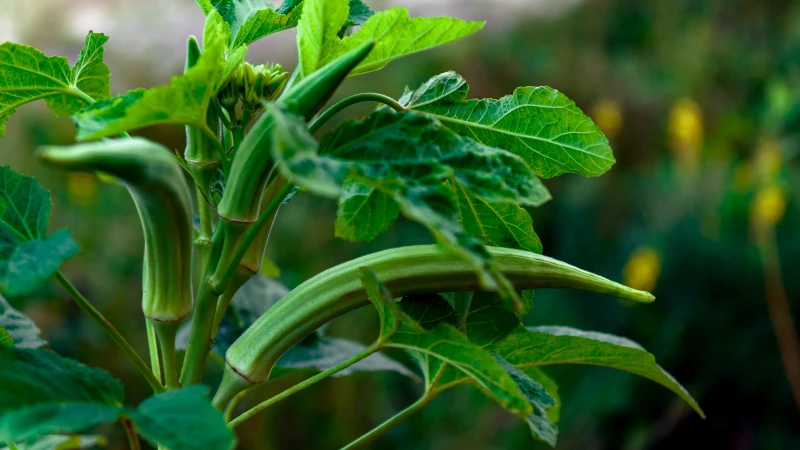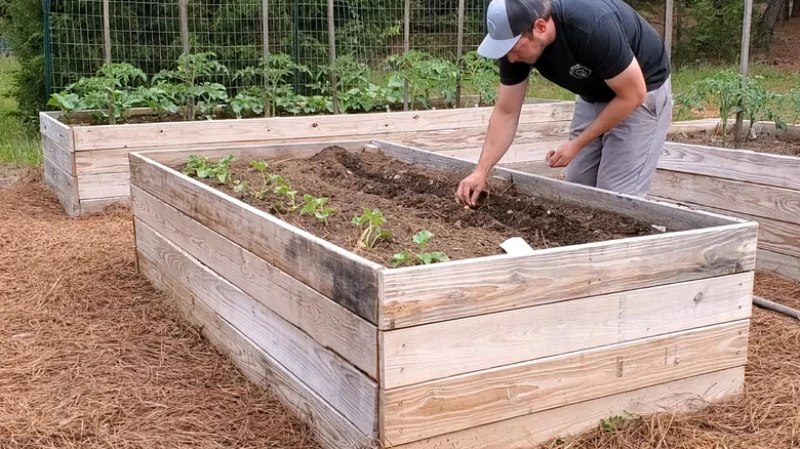Okra, also known as Abelmoschus esculentus, showcases stunning yellow flowers that resemble hibiscus, complete with red eyes. These flowers not only add aesthetic appeal to our gardens but also give way to juicy fruit pods that are perfect for stews and sauces. While the garden-to-table process may seem lengthy, with directly sown okra taking up to 90 days to ripen, starting with seedlings can shorten this cycle to about 40 to 70 days. This method is particularly beneficial for individuals in the northern regions with shorter summers.
Mastering the Art of Growing Okra
Growing okra successfully requires attention to detail right from the start. It all begins with the seeds. Make sure to use fresh seeds, as older ones may not sprout. To prepare them for planting, soak them overnight or gently sand them down due to their hard coating, which can delay germination. When it's time to plant, aim for about two to three weeks after the last frost. For an early start, consider starting the seeds indoors 5 to 6 weeks before the last expected frost and then transplant them carefully into the ground.
Transplanting okra can be tricky, so it's best to use biodegradable or peat pots that can be planted directly into the soil. Look for seedlings that are short, have sturdy stems, and are a dark green color. Before moving them outdoors, make sure to fan and harden them off to prevent diseases and ensure better performance once they are in the ground.
Optimal Conditions for Okra Growth
Okra thrives in full sun, so it's essential to plant it in a location that receives ample sunlight throughout the day. When planting the seeds or transplants, arrange them in rows from east to west to maximize sun exposure. As the seedlings grow, thin them out to ensure they are about 18 inches apart. Avoid planting okra in cool soils, as this can lead to the seedlings damping off and dying prematurely.
To ensure the soil is warm enough for planting, make sure the temperatures are at least 60 to 65 degrees Fahrenheit at a depth of 4 inches. If you're unsure, consider solarizing the soil by covering it with a clear plastic sheet before planting. For added protection, you can place the transplants in open-ended tin cans to shield them from the wind and cutworms.
How to Cultivate Delicious Okra
Another tip to get tasty okra is to grow these sun-hungry vegetable plants in well-draining, organically-rich soils. Ideally, a soil test will direct you to the best course of action. If not, work in aged chicken or horse manure 3 to 6 inches into the soil — this will also improve the soil's permeability while keeping weeds out. Alternatively, you can feed it a balanced 10-10-10 fertilizer — a good balance for food plants. When the seedlings are ready to bud, side-dress with a nitrogen-heavy fertilizer (21-0-0). Don't go overboard, as it may act contrarily, stimulating leafy growth at the expense of the fruit. Pay attention to the soil's acidity because highly alkaline soils (with a pH over 7.0) — as found in Utah — must be amended with sulfur.
Watering is another limiting factor when growing okra. Although okra plants are prized for their drought tolerance, they must be soaked 6 inches deep with 1 to 1.5 inches of water every 7 to 10 days if it hasn't rained. You must water them daily if the temperatures exceed 100 degrees Fahrenheit, especially during pod development. Look out for yellow flowers, as they imply your pods will be out in another 2 to 3 days.
Nailing the right harvesting time is essential or else you'll end up with woody, hard okra that's better off composted or used in cut-flower arrangements — round-podded cultivars are an exception. To get tasty okra, inspect the plant every other day and harvest the tender pods, which should measure 2 to 4 inches long. Better yet, follow Thomas Jefferson's hack of bending the pod; if it breaks, know it's good to be pickled, fried, or enjoyed raw.
If you happen to miss the bus, it's important not to leave the over-mature pods hanging on the tree, as they can hinder new flowering. Unless you want to keep a few to save seeds for the next season, always trim the pod-containing stems at their base to avoid harming the plant. Ideally, the harvesting period should span about 10 to 12 weeks, but if it starts to slow down, consider practicing ratoon cropping—trim the plant back to 6 to 12 inches above the ground. This will stimulate new growth and allow for another crop season around fall.








